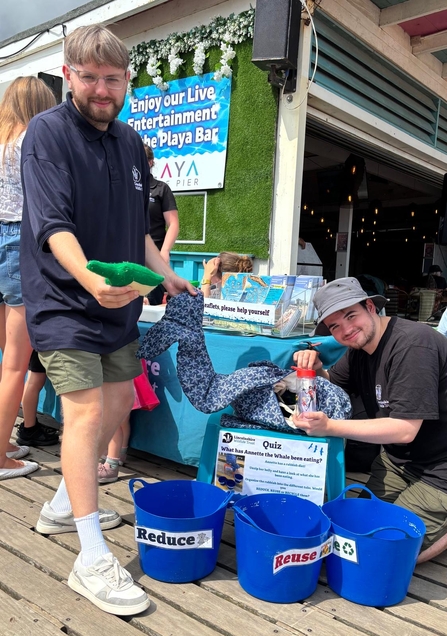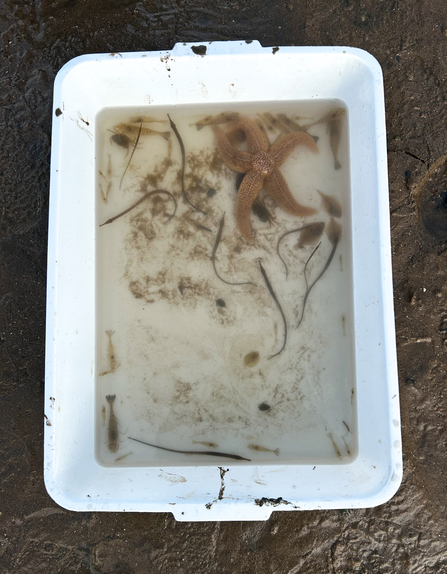We started the week with a trip to Skegness Pier for a community engagement event as part of Wildlife Day. We were working alongside the Gibraltar Point Education team and the Wilder Humber team and it was great to catch up with both groups. We’ve got to know them well over the past few weeks, so teaming up with them again was a real highlight.
2025 Marine Interns Blog: Weeks 7 & 8

Balancing our time between the two teams, Josh and I helped run a range of activities, including the ever-popular oyster painting, animal guess who, and Annette the recycling whale. I really enjoyed engaging with the public in such a unique setting, and hearing so many families say how much they enjoyed the day was incredibly rewarding.
The next day was an exciting county tour for me. I started the morning at Banovallum House in Horncastle before heading to Sea View Farm on the coast to meet up with the Wilder Humber team and begin data collection for my individual project. My project focuses on developing a repeatable method for measuring the social capital impact of marine restoration projects.
The social side of marine conservation is becoming increasingly recognised, as we come to better understand how communities can influence the success of marine restoration efforts. This project is particularly exciting for me because it builds on my previous marine social science research at university, but in a practical, more hands-on way. I’m really looking forward to seeing how it develops.
Sea View Farm is especially important for my project. As it’s the site for the new Wilder Humber nursery volunteering programme, it gives me the opportunity to understand volunteers’ experiences from the very beginning. I’m really grateful to the Wilder Humber team for allowing me to attend their induction days, and the volunteers for being such willing participants in the study. It was also valuable to learn more about the programmes significance and to explore volunteer motivations for committing to take part.
Notably, the site is the first purpose-built saltmarsh and sand dune nursery in the UK, a key milestone for marine restoration development. Its primary aim is to produce seeds that will help enrich two hectares of saltmarsh and reconnect sand dunes, both of which are vital ecosystems in the region.

After the induction event I headed to Gibraltar Point to join Josh for our second sea dipping event. This time, we took part in the evening session and had another lovely time with great weather, inquisitive seals, and interesting captures including pipefish, weaver fish and common starfish. The families that were participating in the event were really engaged and a couple of children even shared their aspirations to pursue a career in marine conservation. It was great to offer insight into the paths we’ve taken so far.
The following week, we both delved deeper into our projects. Josh has begun organising his first Pacific oyster surveys and is busy working through the key details like tide times, transport logistics, and risk assessments. I’m looking forward to assisting Josh on his project and building up some practical marine conservation skills of my own.
For my project, I have connected with Dr Anna Bedenk-Smith, a social scientist based at the University of Lincoln. It was great to meet her and have an introductory chat about the potential methods that I could incorporate into my methodology. Dr Anna suggested some really exciting directions for the project, and I’m eager to put them into action over the coming weeks.
Our collaborative project is also moving quickly. We’ve connected with key stakeholders whose insights have been vital in refining our scope. We’re both really excited about this project and look forward to sharing more with you soon.
The first two months have flown by, and we both feel well and truly settled into the internship. We can’t wait to share what weeks 9 & 10 bring in the next blog!
Ryan

